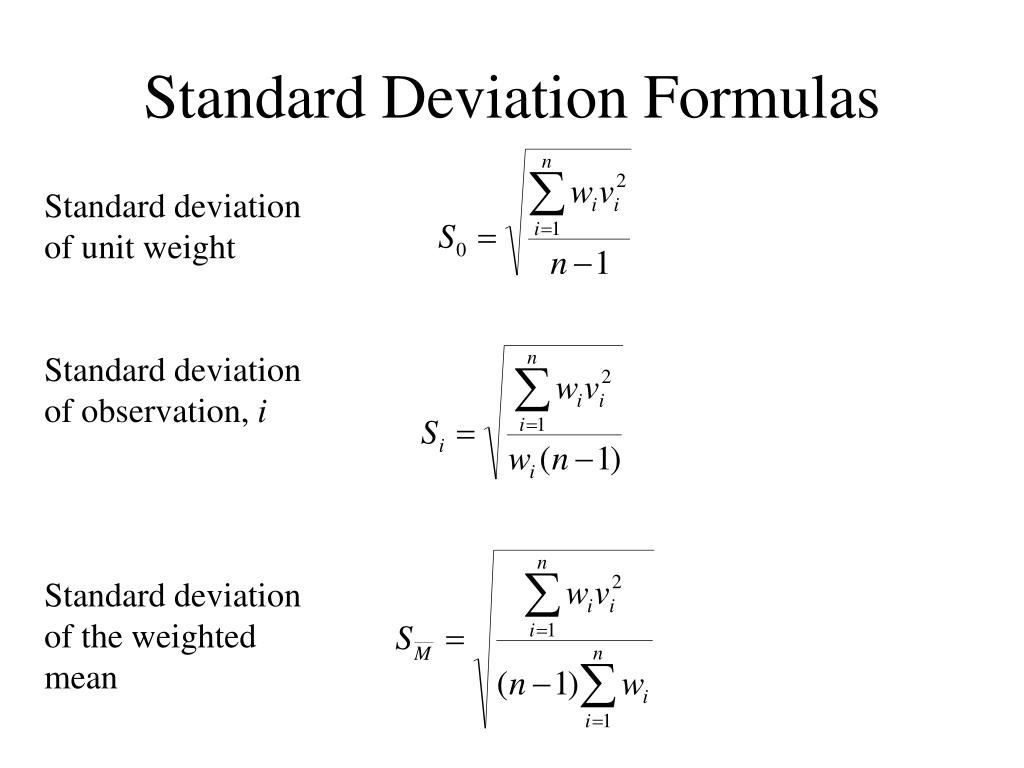
Whose square root σX¯displaystyle sigma _bar X can be called the standard error of the weighted mean. įor uncorrelated observations with variances σi2displaystyle sigma _i^2, the variance of the weighted sample mean is σX¯2=∑i=1nwi2σi2displaystyle sigma _bar X^2=sum _i=1^nw_i^2sigma _i^2 In particular, if the means are equal, μi=μdisplaystyle mu _i=mu, then the expectation of the weighted sample mean will be that value, E(X¯)=μ.displaystyle E(bar X)=mu. Then the weighted sample mean has expectation E(X¯)=∑i=1nwiμi.displaystyle E(bar X)=sum _i=1^nw_imu _i. If the observations have expected values E(Xi)=μi,displaystyle E(X_i)=mu _i, Its expected value and standard deviation are related to the expected values and standard deviations of the observations as follows, The weighted sample mean, X¯displaystyle bar X, with normalized weights (weights summing to one) is itself a random variable. Similarly, the weighted average uncertainty, σ¯displaystyle bar sigma can be shown to be σ¯=(∑i=1nwi)−1displaystyle beginalignedbar sigma &=left(sqrt sum _i=1^nw_iright)^-1endaligned Statistical properties When the weights are normalized then wi′=1n.displaystyle w_i'=frac 1n. The common mean 1n∑i=1nxidisplaystyle frac 1nsum _i=1^nx_i is a special case of the weighted mean where all data have equal weights, wi=1displaystyle w_i=1. Using the normalized weight yields the same results as when using the original weights. Note that one can always normalize the weights by making the following transformation on the original weights wi′=wi∑j=1nwjdisplaystyle w_i'=frac w_isum _j=1^nw_j. For such normalized weights the weighted mean is simply x¯=∑i=1nwi′xidisplaystyle bar x=sum _i=1^nw_i'x_i. The formulas are simplified when the weights are normalized such that they sum up to 1displaystyle 1, i.e.

Some may be zero, but not all of them (since division by zero is not allowed). Therefore, data elements with a high weight contribute more to the weighted mean than do elements with a low weight. (where x represents a set of mean values) with non-negative weights x¯=∑i=1nwixi∑i=1nwi,displaystyle bar x=frac sum limits _i=1^nw_ix_isum limits _i=1^nw_i, Mathematical definitionįormally, the weighted mean of a non-empty set of data x1,x2,…,xn,displaystyle x_1,x_2,dots ,x_n, Such a linear combination is called a convex combination. Since only the relative weights are relevant, any weighted mean can be expressed using coefficients that sum to one. Thus, the weighted mean makes it possible to find the average student grade in the case where only the class means and the number of students in each class are available. Or, this can be accomplished by weighting the class means by the number of students in each class (using a weighted mean of the class means): x¯=(20×80)+(30×90)20+30=86.displaystyle bar x=frac (20times 80)+(30times 90)20+30=86. The average student grade can be obtained by averaging all the grades, without regard to classes (add all the grades up and divide by the total number of students): x¯=430050=86.displaystyle bar x=frac 430050=86. However, this does not account for the difference in number of students in each class (20 versus 30) hence the value of 85 does not reflect the average student grade (independent of class). The straight average of 80 and 90 is 85, the mean of the two class means.

The straight average for the morning class is 80 and the straight average of the afternoon class is 90.


 0 kommentar(er)
0 kommentar(er)
